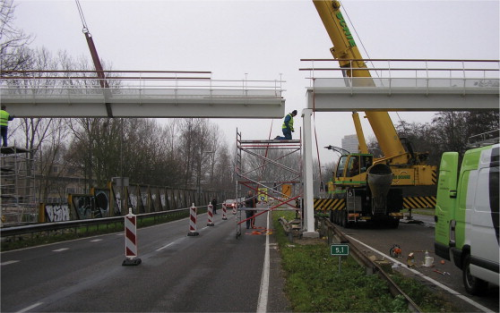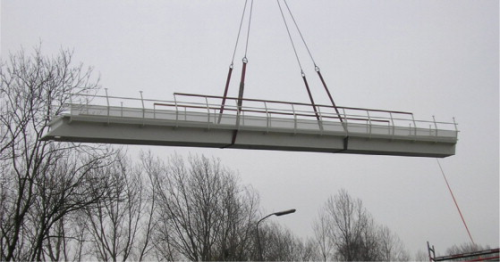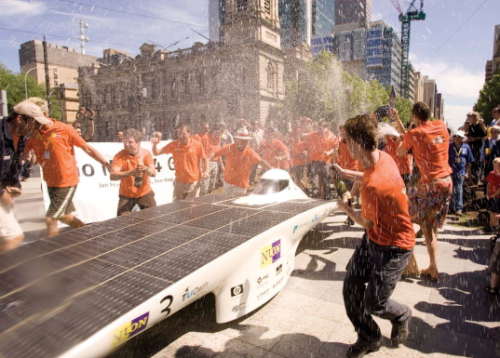


DSM's new sizing plant is located on the company's existing site in Xinghuo, near Shanghai, and will produce a range of sizing and binder products under the Neoxil® tradename. The facility will enable DSM to work more closely with customers in the Chinese, and Asian, markets. Neoxil customers in China include Jushi, the largest producer of glass fibre in the country.
DSM says that Neoxil (which is part of DSM Composite Resins) holds a 25% share of the global glass fibre sizing market. The Chinese plant joins an existing production facility in Filago, Italy, but this is approaching full capacity, John van Osch, President of DSM Composite Resins, told Reinforced Plastics. As Neoxil sales are geographically spread around the world, there was a choice of where to locate the second plant, but China's fast growing glass fibre industry proved a decisive factor. The equipment and technology being used in the Shanghai plant is the same as in the Italian plant. Using the same raw materials and production methods guarantees consistency between the two production facilities and ensures that products can be shipped globally from either site.
Wind energy
DSM started production of a new sizing product at the Shanghai plant in the first quarter of this year. Neoxil 728 is designed for use with the glass fibre reinforcement used in wind turbine blades made using vinyl ester or epoxy resins. The wind power industry in Asia is growing rapidly. China, for example, more than doubled its total installed wind power capacity in 2006, and the country is now the sixth largest wind power market in the world.
Neoxil 728 is a low molecular weight epoxy with a high solids content. DSM reports the product has excellent mechanical properties, preventing glass fibre from breaking and making the glass fibre compatible with the resin matrix. Low migration properties reduce the cost of glass fibre production. Local production of purpose-designed Neoxil 728 sizing will ensure a consistent, high performing solution for manufacturers in China.
"Up until now, most glass fibre manufacturers in China have produced their own sizing in-house," according to Remko Goudappel, DSM Business Director for Neoxil Sizings and Binders. "It is very challenging to achieve and maintain a consistent high quality sizing, which is a critical component in the strength and rigidity of wind turbine blades."
DSM can also offer local supply of second-generation Synolite® 1777 unsaturated polyester resins to the Chinese wind market from its manufacturing joint venture JDR in Nanjing.
“The wind turbine blade market has largely been dominated by epoxy resins," says Rob van de Laarschot, New Business Development Manager at DSM Composite Resins. "But to follow the trend of producing large series of bigger blades in shorter time, fast processing times are key. Producers are looking to adapt blade design and to change production processes; they want higher fibre content and thus greater stiffness and strength with a better size/weight ratio for lower production costs."
Growth plans
The sizing plant in Shanghai is another part of the DSM group's objectives for growth in China. In its Vision 2010 strategy, it has set a sales target for China of US$1.5 billion in 2010. The plan also calls for a sales growth of 5% per year overall, and US$1 billion in sales from innovations (new products) by 2010. For DSM Composite Resins, the overall strategic objectives mean an additional €300 million in global sales by 2010 (from an estimated €500 million in 2007). This figure will be made up by organic growth (€100 million), innovation (€50 million), and mergers and acquisitions (€150 million).
Organic growth will come from maintaining market share and focusing on growing segments and regions, such as China. After China, John van Osch ranks Eastern Europe (Russia) as its next target, followed by India. Van Osch confirms that Russia ‘is on the radar screen.’ In line with its focus on the high performance sectors of the composites industry rather than general-purpose products, DSM Composite Resins' target in the Russian market will be the automotive and truck industries.
India is also a fast growing market for composite resins, van Osch admits, but the company will not be setting up production there just yet.
"You need a certain market size," he notes. "Can you ignore India? No. Will we need to be there in the next few years time? Yes."
Innovation
On the innovation front, van Osch, notes that in the past new product developments were customer-driven, but in the last two years, the business has been a lot more proactive about innovation growth. One of the results of this effort is the turane (thermosetting urethane) family it launched last year. These resins are designed to combine the best characteristics of epoxy resins and polyurethanes in a single material, providing the structural performance of epoxy but with faster processing times.
For the automotive industry, the products are being sold under the Daron® brand. The company is now working on products for the wind energy, marine and other high performance industries.
Turane resins have already been successfully employed in the construction of the Nuna4 solar-powered race car, which won the Panasonic World Solar Challenge last year.
"We also focus on development of new markets," van Osch says. "For example, we see a growing trend in the infrastructure sector to produce large composite parts utilising vacuum infusion technology. A recent example of this comes from the Netherlands, where last December a composite pedestrian bridge was installed in Delft using our materials. The total length of the bridge is 44 m, and it has a width of 1.5 m. It replaces a concrete (and temporary steel) bridge, utilising the existing foundations."
The composite bridge design showed clear advantages in terms of fast delivery, reduced installation and maintenance, and the reuse of existing foundations with minimal adjustments, he adds.
| DSM Composite Resins worked with Delft Technical University in the Netherlands on the development of the Nuna4 solar-powered vehicle. The car won the ninth Panasonic World Solar Challenge, a 3000 km race which took place in Australia last October. Weighing less than 190 kg, the car's body-work was constructed using turane resins and carbon fibre reinforcement. Vacuum infusion was used to produce the two halves of the body shell and wheel casings. The Delft Nuon Solar Team has won the race on the previous three occasions. For the previous three vehicles the team used epoxy resin but for Nuna4 it switched to turane resins. "Processing speed has been a major benefit," says Hjalmar Van Raemdonck, Nuna4's technical designer. "Here we always work with vacuum infusion; with the lower viscosity and adjustable gel time we could substantially reduce production time to just 10% of the time it takes with epoxy. The high fibre volume content also meant we could increase the strength, for example to support the load carrying seat, without increasing the weight. This was in line with the FEM [finite element modelling] we undertook to calculate the stiffness and strength of the design." |
Another innovation project involves the development of environment friendly products, including low styrene products, and products based on renewable resources (non-oil based products), although this work is in the early stages. (In December, DSM announced that it had made an investment in Novomer Inc, a company which is developing a technology to use carbon dioxide and other renewable materials to produce performance polymers, plastics and other chemicals. The companies also plan to sign a cooperation agreement.)
On the third part of the growth plan – mergers and acquisitions – van Osch cannot disclose details but has a good idea of what he wants to do.
"We know what we want to buy, and where," he comments.


